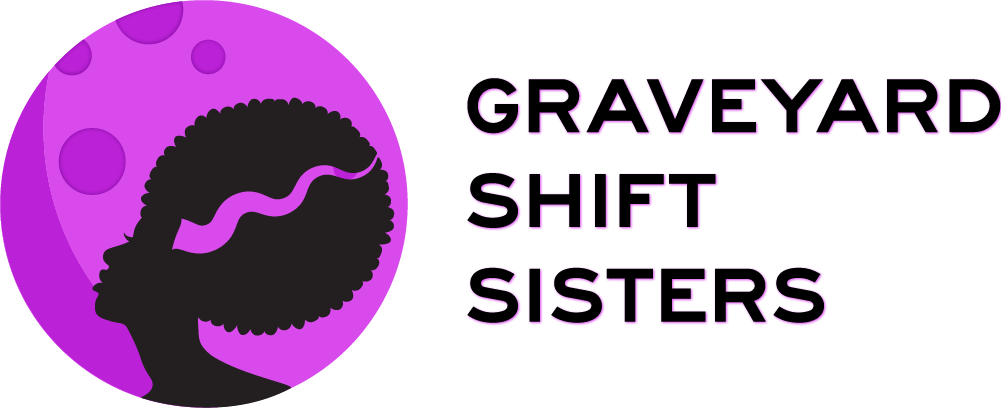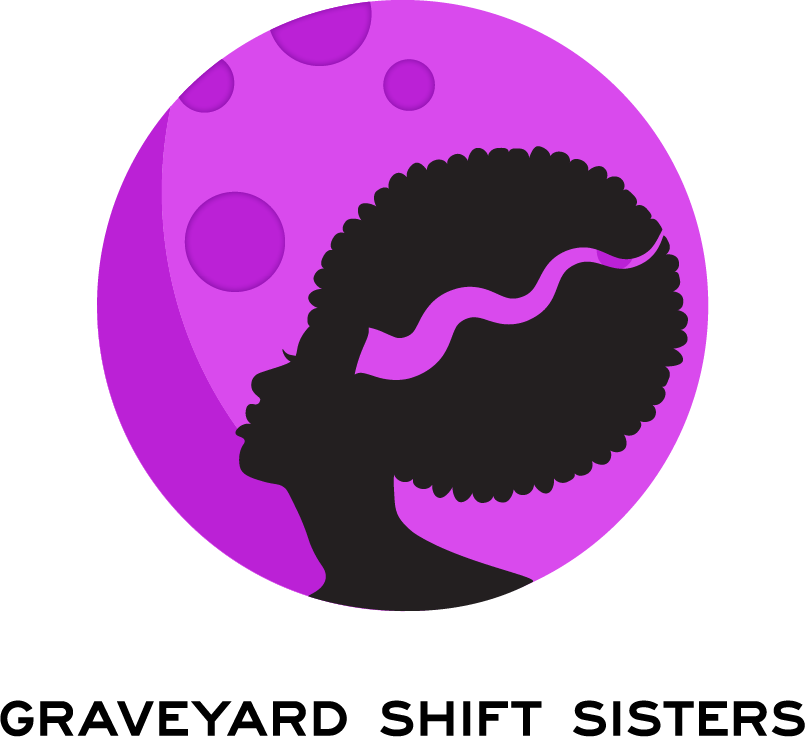Black Women Horror Writers: Interview With Eden Royce
Wow, it feels weird to be posting a feature on myself. Like the ultimate in vanity. No, seriously. It can be difficult for us as women to promote ourselves. Some of us have been trained to be modest, as it’s unbecoming to toot your own horn. Admittedly, this is a struggle many men have as well.
However, I do want to shout about my new release, Spook Lights: Southern Gothic Horror. So I released the book and waited for people to ask me for an interview or asked me to review my book. Since I write Graveyard Shift Sisters’ feature on Black women horror authors, how was that going to work?
I had to get over my reticence to talk about myself in order to get Spook Lights out there in the world. However, I refused to review my own book. That may be the height of self-promotion. So I’ve included a few links from others who have reviewed it so far. Have a look at them while I blush over here in the corner:
“Excellent characterizations show how people create their own horror shows with the choices they make and their own fatal flaws, and that's literal in some of Royce's tales. Like all skillful storytellers, her voice is unique. I was that little girl again, sitting in front of a fireplace listening to edge-of-my-seat tales.” -Lynn Emery
“She evokes tangible environments to the point where you can almost feel warm breezes blow and smell the pungent scents she describes, but Royce’s ability to incorporate these legends into horror stories is the real strength of the collection.” -Rosemary’s Pixie
Since I can’t interview myself either, I asked a fellow Graveyard Shift Sister, the super talented Sumiko Saulson, to help out. Here’s how it went:
How do you think gothic horror differs from what people may think of when they think of mainstream horror?
I call gothic horror “quiet horror”. It’s more subtle rather than in-your-face, slasher horror. Gothic horror is creepy and atmospheric, which can be more unsettling. You think you’ve gotten everything there is to get from the story, but then something happens—maybe a creak of the floorboard or the frantic flapping of bird wings—to bring that unnerving sense pouring down your back like icy water. It’s the first kind of horror I read and watched and I keep going back to it. I still read short stories by Poe, DuMaurier, and O’Connor along with the indie authors I manage to come across in my online travels.
What inspired you to incorporate the language and traditions of the Gullah people and are they in your current story?
Gullah is a language I grew up with. So many people, especially other blacks, confuse the sound of Gullah with “Ebonics”, or just plain uneducated speech. In a Facebook group I belong to, a woman mentioned that she “hated to hear people talk that mess”. It was hard for me to read that comment. Gullah people—Geechees—in my mother’s day felt they had to hide that part of themselves to be taken seriously. Many refused to speak their language outside of the home in fear of sounding ignorant. I had hoped that era was behind us. In truth, Gullah is a language in its own right, with specific grammar and sentence structure.
These traditions are a part of who I am. I grew up sitting at the table with root workers and listening to stories, hearing the Gullah language along with English. I felt I was being true to myself and my culture by incorporating the traditions.
How are Gullah and hoodoo incorporated into the Spook Lights stories?
“Doc Buzzard’s Coffin” features snippets of the Gullah language, and I hope it gives readers unfamiliar with Gullah a sense of the culture. In “Hag Ride”, I described a hoodoo ritual—taking liberties, of course— to bring a macabre atmosphere to the tale.
Sometimes I think people get hoodoo and voodoo and other types of conjure magic mixed up, or think they are inherently evil. I recall a thread in a Facebook group (I’ve got to stay out of these groups!) where someone was writing a revenge story about a young black man persecuted by white police officers and he wanted the protagonist’s grandfather to “do voodoo” on the men as revenge. It was important to me to show conjure used in a way that wasn’t about killing people. But sometimes even with good intentions, things can still go wrong.
What scares you?
The thought of losing someone I love. Or losing myself. My aunt has advanced dementia and it is a devastating disease that takes your memories and your experiences—the things that make us what we are.
That and crawly bugs. Ugh.
In older horror, such as “The Monkey Paw,” native and non-Christian religions have been traditionally portrayed as evil. Is that starting to change?
I think people are becoming more aware of native cultures and horror is slowly turning away from seeing “the native way” as something frightening or evil. People tend to fear what they don’t understand, but with knowledge comes a willingness to comprehend. There will always be books considered classics of the genre created by writers who saw native cultures in that manner. But with more people of color writing horror and more authors trying to get a grasp on “writing the other” in a believable and respectful way, horror is changing. With all change, it takes time and it takes people willing to write what is not currently accepted.
Do you think that audiences are receptive to the more modern portrayals of native cultures?
There are people who are open minded and willing to entertain differences in the genre, but there are also people who are not interested in learning another perspective. The only thing you can do as a author is write what is true to you, and hope the people interested in what you write find your work and enjoy it.
You’re involved Lucy Cruell’s film project, 7 Magpies with several other black female horror writers, including Crystal Connor and myself. There are also seven directors, all black women. Some prominent names are attached to the project like Tananarive Due and Rae Dawn Chong. How do you feel about the project?
I am super excited to be among the fourteen. I was flattered to near speechlessness to be asked to be a part of 7 Magpies. There are amazing women involved in this project, and it’s the first of its kind: a horror film anthology written and directed by black women. It’s a groundbreaking project and can go a long way towards helping people embrace other points of view and non-traditional voices in horror.
You live in Kent, England now. Do you find that where you live influences your writing?
Sometimes, although I haven’t written a story set in England as of yet. I find that changing your location—even moving to another room, not necessarily across an ocean—can help unblock my writing. Since my move, I’ve worked on completing existing projects brought with me from the States. When I go on walks or on trips here I am inspired by what I see, most times enough to make notes for a new project. But I’ve got to finish my existing to-do list first!
In “Spook Lights,” how do the stories relate to each other?
The uniting theme is the Southern mindset, the culture and experience that travel with you. It certainly came with me when I moved to England. The Southern Gothic mindset is celebrating the grotesque and the strange, especially when it involves people who are related to us. There’s a meme out there on the Internet that says, “In the South we don’t hide our craziness. We parade it on the porch and serve it iced tea.” And in my experience that’s all too true.
My cat has been vying for my attention this entire interview. Do you have cats?
*laughs* I have one cat. He is still a kitten, technically, as he’s just over five months old. Samurai is learning the world, exploring everything, and being annoyingly adorable. He’s discovered he can pick certain things up and carry them off, so I have to be careful. Overall, he’s a good boy.
Why do you think there is such a disparity between the popularity of horror in cinema— where it is wildly successful—and in literature, where it is often pooh-poohed as not being serious literature?
I honestly don’t know. Horror works in both mediums, only differently, and I enjoy both. Film gives people the ability to experience a story visually—allowing visceral, knee-jerk reactions to the director’s vision.
With literature, the reader becomes the director, so to speak. Consciously or not, readers do their own world-building as they read, using their imaginations to visualize what the author has written. They fill in character—and creature—descriptions according to what’s between the pages.
When people hear the word “literature”, they may think it only refers to books on the required reading list at school. But many authors of these classics—Oscar Wilde, Henry James, Robert Louis Stevenson—has a fascination with monstrosities and ghosts that stayed with them their entire lives. But those who do read horror are devout and dedicated to the genre. Some people don’t believe that women like Mary Shelly and Charlotte Dacre could have conceived of such horrid storylines and violent, destructive characters. I hope more female horror authors will write what speaks to them—truly, deep down—so horror can once again be seen as literature. If you’d like to know more about Spook Lights, or pick up a copy, head over to my blog for the details.
Thank you to everyone who has read this Black women in horror writing series, commented, and shared on social media. I appreciate your making this feature a success. Please continue to share your love of horror!
Image: Silhouette of a little girl with lantern walking towards a jack-o'-lantern at dusk By Saptak Ganguly

